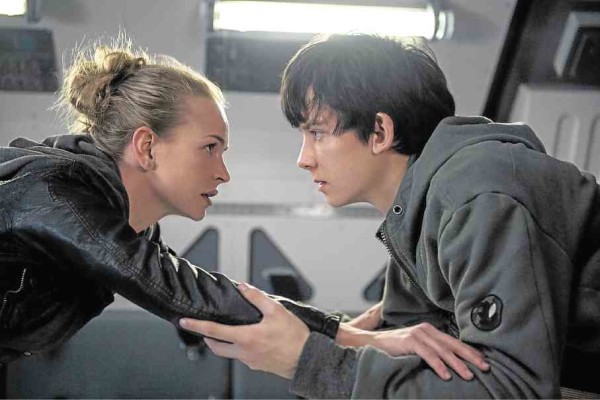After “The Martian” clicked with “spaced-out” viewers in 2015, producers realized that the Red Planet had become a fascinating “virtual destination” with moviegoers, and promptly and savvily lined up new productions to give them more of the same.
The first follow-up film adventure, “The Space Between Us,” has reached local screens, and takes the sci-fi and “sci-fact” adventure a giant step forward by depicting Mars as a planet already populated by a handful of humans. In fact, a child has been born on the previously lifeless world, the son of a female astronaut who died during childbirth!
To make the new movie click with young viewers, the boy is now a teenager, longs to visit Earth—and belatedly learns what it is to be truly human.
This overarching theme makes Peter Chelsom’s film full of instructive possibilities, even for earthbound viewers.
It is this thematic cogency that keeps us watching, even if the movie turns out to be messy and full of unproductive detours and dead ends.
Aside from the teenage boy, Gardner (Asa Butterfield), the film’s other young lead character is a young and troubled orphan, Tulsa (Britt Robertson), who ends up helping him look for his parents and thus rediscover and reaffirm his roots.
Trouble is, the production has made Tulsa so troubled that she ends up wresting its storytelling’s focus away from Gardner. She’s so colorfully edgy and textured that he comes off as rather bland and dry—not a good place to be for a screen protagonist.
Other distractions include a wild goose chase across several US states as the Mars mission’s chief and his many associates chase the fleeing teenagers.
Most improbably, they manage to escape the high-tech dragnet and, with similarly improbable pinpoint accuracy, are able to end up in Gardner’s late mother’s home, where they finally learn the truth about his back story—and psychological provenance.
These unlikely gambits and gambles delight young viewers, but they’re palpably illogical—and even dangerous.
In a particularly irresponsible depiction, the small plane Tulsa is flying is made to crash into a big barn, resulting in a huge explosion that obliterates the structure and scorches the countryside. This is supposed to be giddy fun and games?
On the plus side, the film’s Martian scenes are believably staged, and Gardner’s robot sidekick is a droll creation that entertains viewers without having to cause mayhem.
The portrayal turned in by Carla Gugino as Gardner’s surrogate mother is also effective and moving, aside from motivating Gardner to further explore and expand his underdeveloped humanity.
Despite its lapses, “The Space Between Us” affirms that innate strength and weakness, and “proves” that it’s ultimately impervious to the seemingly more “advanced” seductions of science-fiction—and science-fact.
